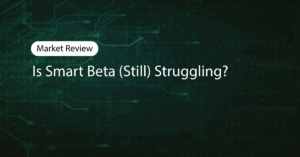Its Never Been More Important (and Easier) to Review Sector ExposuresMarket Review | April 2025
Introduction
Following “Liberation Day”, equity investors are carefully assessing the impact of the newly announced set of tariffs applied to all imports to the US. While it appears clear that US consumers will overall be hit by price increases, the exact effects on each business sector will depend on the structure and location of the supply chain of each industry. For example, Consumer Discretionary is expected to be significantly impacted since Southeast Asia (where new tariffs are between 35-55%) is a major production hub for companies operating in that sector. The Technology sector is also overall expected to suffer given its complex global supply chain (this even includes e-commerce platforms where the majority of the products originate from outside the US). Some other sectors, like Healthcare, remain somewhat protected since the pharmaceutical industry is currently exempt from the new “reciprocal tariffs” (although this may change when “sectoral tariffs” are implemented).
In this context, equity investors need the tools to quickly detect and measure their sector risk exposures. This could be a challenge when dealing with a complex institutional portfolio: aggregating multiple types of instruments (customized mandates, mutual funds, ETFs) managed by multiple investment managers can quickly become time-consuming and require superior data management skills. The difficulty is primarily related to the collection of (ideally synchronous) stock holdings data. One could therefore try to aggregate sector-level allocations instead, but then a data classification problem may arise, with a potentially different set of sector and industry definitions used by each investment manager. To address this issue, the Scientific Portfolio platform offers a risk-based measure of sector exposures that entirely relies on historical returns, and the purpose of this Market Review is to show the benefits of this more efficient approach. In particular, our risk-based exposures facilitate the review of over 3,000 mutual funds and ETFs across three investment zones (United States, Developed Europe and Emerging Markets). We observe a significant level of dispersion with respect to several sector risk exposures, meaning that long-only equity investors are offered a lot of flexibility to fine-tune their sector risk profile.
Contents
- Mitigating Tail Risks without Sacrifice: Empirical Evidence of Risk-Based Diversification’s Benefits for Equity Investor
- Matteo Bagnara, Benoit Vaucher
- Beyond Carbon Price: A Scenario-Based Quantification of Portfolio Financial Loss from Climate Transition Risks
- Vincent Bouchet, Thomas Lorans, Julien Priol
- Do ESG Scores and ESG Screening Tell the Same Story? Assessing their Informational Overlap
- Vincent Bouchet, Jenna Jones, Mathieu Joubre, Aurore Porteu de La Morandière, Shahyar Safaee
- Do ESG Exclusions have an Effect on Portfolio Risk and Diversification?
- Vincent Bouchet, Aurore Porteu de La Morandière, Benoit Vaucher
- Attribution Analysis of Equity Portfolio Emissions: Examining and Integrating Existing Frameworks
- Vincent Bouchet
Authors
Matteo Bagnara, PhD
Quant Researcher,
Scientific Portfolio ……………………………………….
Deputy CEO and Business Development Director,
Scientific Portfolio
Read the full Market Review
"*" indicates required fields


